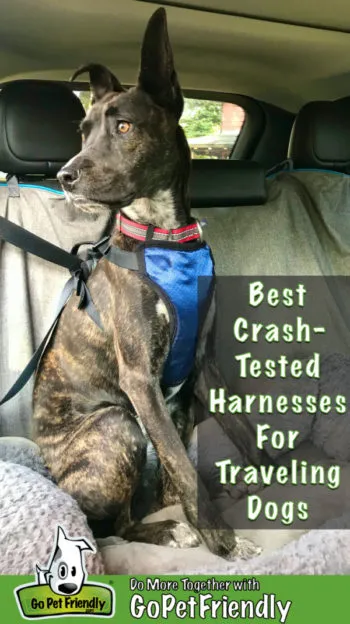 Large brindle dog safely secured in a crash-tested car seat belt harness in a vehicle.
Large brindle dog safely secured in a crash-tested car seat belt harness in a vehicle.
Ensuring the safety of your canine companion during car travel is paramount, especially when you have a large dog. While many owners prioritize their pup’s comfort and convenience, selecting the Best Car Seat Belt For Large Dogs means looking for crash-tested options that guarantee maximum protection. These specialized harnesses are designed not only to keep your beloved pet secure but also to prevent distractions that could lead to accidents, safeguarding everyone in the vehicle.
Finding the right large dog seat belt can be a daunting task with countless options on the market. Our aim is to simplify this decision-making process by providing a comprehensive guide to top-rated, crash-tested harnesses that offer superior safety, comfort, and durability for your big dog’s adventures.
Why a Car Seat Belt for Your Large Dog is Non-Negotiable
Whether you’re embarking on a short drive to the park or a cross-country journey, keeping your large pet securely restrained in your vehicle is a critical safety measure. A proper car seat belt for large dogs extends beyond mere compliance; it’s about proactively protecting your pet, yourself, and other passengers.
Protecting Your Pet and Passengers
Crash-tested dog harnesses are engineered to help prevent injuries to your pet in the event of an accident. Beyond this, they play a crucial role in preventing driver distraction, which is a leading cause of collisions. An unrestrained dog, particularly a large one, can become a significant hazard by unexpectedly moving around, jumping onto the driver’s lap, or interfering with controls.
Furthermore, a well-designed car restraint system protects human occupants. In a collision, an unsecured large dog can be propelled forward, causing severe injury to themselves and any person in their path. Investing in a robust car seat belt for large dogs is therefore an investment in comprehensive vehicle safety.
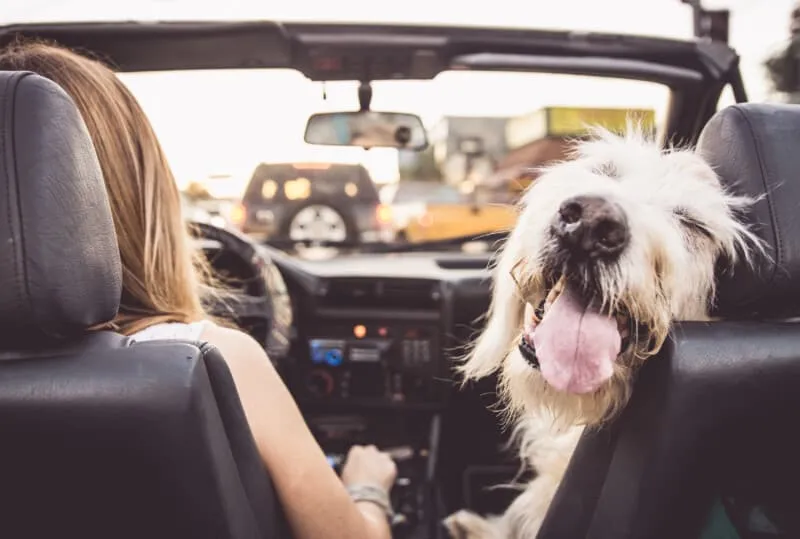 Happy large dog sitting in the front passenger seat of a car, wearing a car seat belt for safety.
Happy large dog sitting in the front passenger seat of a car, wearing a car seat belt for safety.
The Alarming Physics of Unrestrained Pets
Many pet owners underestimate the sheer force an unrestrained pet can exert during a crash. Consider this startling fact: in a 50 mph collision, a 10-pound pet can become a projectile with 500 pounds of force. For a large dog weighing 60 pounds, this force escalates to an astounding 3,000 pounds! This incredible kinetic energy highlights why a sturdy restraint, like a crash-tested car seat belt for large dogs, is absolutely essential. It’s not just about preventing your dog from moving around; it’s about managing potentially catastrophic forces.
Legal Implications and Distracted Driving
Beyond the physical dangers, failing to properly restrain your pet can lead to legal consequences. While not all states have explicit laws mandating pet restraints, many do. Even in states without specific pet restraint laws, motorists driving with loose pets can still face tickets for distracted driving, especially if a collision occurs. These laws underscore the recognized hazard that an unrestrained animal poses on the road. Ensuring your large dog is securely buckled up not only enhances safety but also helps you comply with traffic regulations and avoid unnecessary fines. For more information on specific state laws, consider reviewing resources on pet restraint requirements while driving.
If you’re looking for additional car safety accessories, a [single back seat dog cover](https://dogcarestory.com/single-back-seat-dog-cover/) can also help keep your vehicle clean and protect seats from scratches or spills, complementing your dog’s car seat belt.
Understanding Crash-Test Standards for Dog Restraints
When searching for the best car seat belt for large dogs, understanding crash-test standards is crucial. Unlike child safety seats, there are currently no federal crash-test standards specifically for pet car harnesses in the United States. This lack of regulation means manufacturers can make claims about “crash-testing” their products without external verification or public disclosure of results.
The Role of the Center for Pet Safety (CPS)
Recognizing this gap, the Center for Pet Safety (CPS) stepped in. In 2011, they conducted an independent pilot study that revealed alarming results: almost all tested car harnesses failed, many catastrophically. This led to a landmark study in 2013, which helped bring greater awareness to the issue and prompted significant improvements in product design.
Today, the CPS offers an independent test and certification program for pet travel harnesses. When a harness is “CPS Certified,” it means it has undergone rigorous, publicly disclosed testing protocols and met specific safety criteria. This certification provides an invaluable layer of trust and reliability for pet owners. We place significant weight on CPS-certified harnesses when making our recommendations. For instance, the [best dog seat belt harness 2020](https://dogcarestory.com/best-dog-seat-belt-harness-2020/) often featured CPS certifications as a key selling point.
Manufacturer Claims vs. Independent Certification
Just because a manufacturer states their harness is “crash-tested” doesn’t necessarily mean it meets robust safety standards. Manufacturers are not required to disclose their testing methodologies or results, making it difficult for consumers to assess the true level of protection. This is why independent certifications, like those from the CPS, are so vital. They offer transparency and an unbiased evaluation of how a [large dog seat belt for car](https://dogcarestory.com/large-dog-seat-belt-for-car/) performs under crash conditions, allowing you to make an informed decision for your pet’s safety.
How We Chose the Best Car Seat Belts for Large Dogs
With over 12 years of full-time travel alongside our dogs and extensive experience reviewing pet products, we understand what truly makes a dog car restraint effective, comfortable, and durable. Our selection process for the best car seat belt for large dogs prioritizes safety, drawing heavily on independent crash-test data and real-world performance.
Our Experience and Expertise
Our journey has equipped us with unique insights into the top pet brands and their commitment to quality. We advocate for products designed with the same meticulous attention to detail you would expect for any human family member. Our personal dog, Myles, plays a crucial role in our evaluation process. He’s the ultimate tester, providing firsthand feedback on fit, ease of use, and overall comfort during car rides. His experience helps us assess how a harness feels in practice, not just in theory.
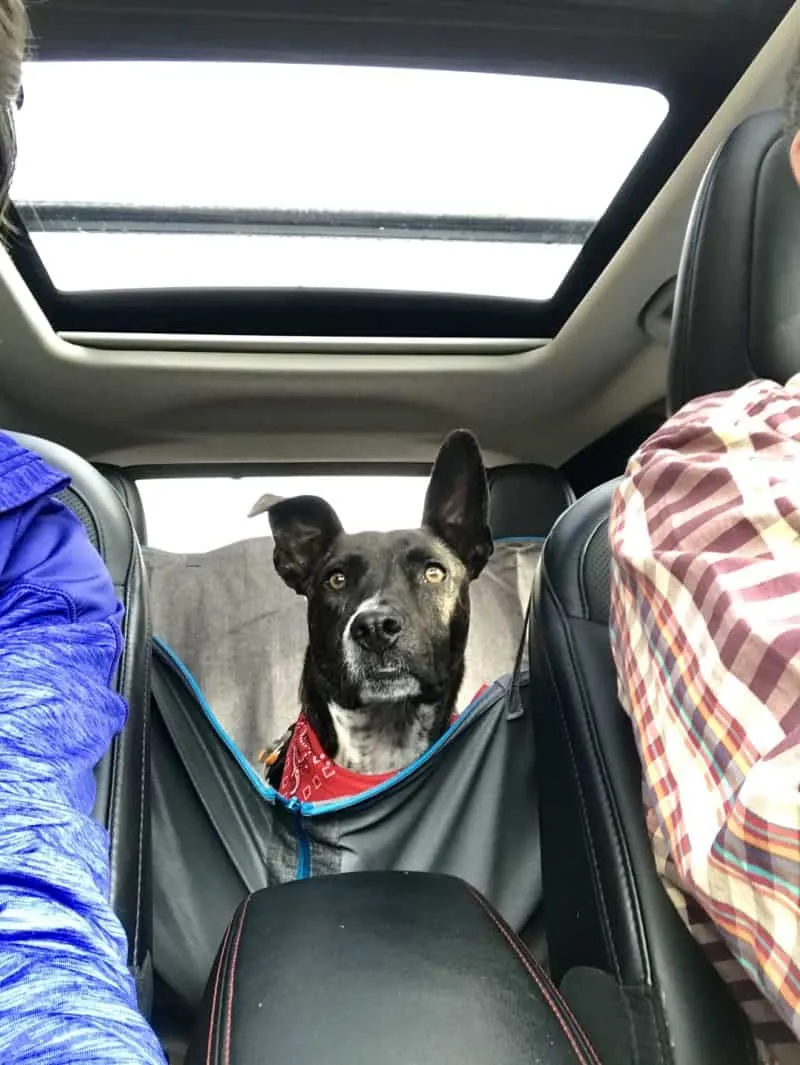 Large brindle dog in a red bandana and secured with a car seat belt in the back seat of a Jeep.
Large brindle dog in a red bandana and secured with a car seat belt in the back seat of a Jeep.
Key Selection Criteria
When evaluating each large dog seat belt, we focused on several critical factors:
- Crash-Test Results and Certification: Foremost, we prioritized harnesses that have undergone independent crash testing, especially those certified by the Center for Pet Safety (CPS).
- Durability and Construction: Materials like high-strength webbing, metal buckles, and reinforced stitching are essential for withstanding impact forces.
- Fit and Adjustment: A perfect fit is crucial for both safety and comfort. We looked for harnesses with multiple adjustment points to accommodate various large dog breeds and ensure they can’t squirm out.
- Ease of Use: How easy is it to get the harness on and off your dog, and how simple is the installation process in the car? Convenience matters for daily use.
- Comfort: Padding, breathable materials, and ergonomic designs contribute to your dog’s comfort, especially during longer trips.
- Versatility: Some harnesses double as walking harnesses, adding convenience to your travel routine.
- User Reviews and Reputation: We also consider feedback from other large dog owners to gauge overall satisfaction and performance in diverse situations.
By meticulously evaluating these criteria, we aim to provide you with a curated list of the best car seat belt for large dogs, ensuring your furry friend enjoys safe and comfortable travels.
Top Picks: Best Car Seat Belts for Large Dogs
We’ve reviewed several leading options to help you choose the ideal best car seat belt for large dogs, prioritizing crash-tested reliability and practical features.
BEST OVERALL: OptimusGear Defender Harness
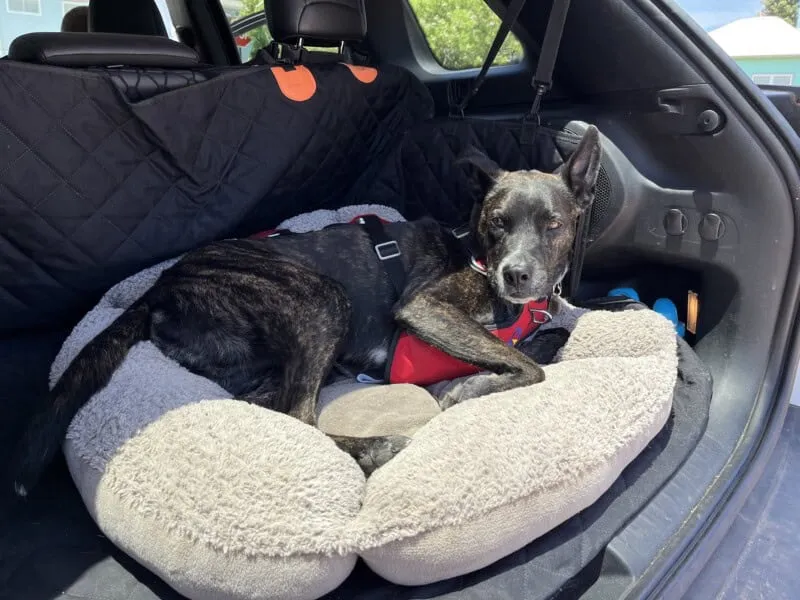 Large brindle dog modeling the OptimusGear Defender car seat belt harness, highlighting its durable design.
Large brindle dog modeling the OptimusGear Defender car seat belt harness, highlighting its durable design.
The OptimusGear Defender Harness stands out for its exceptional construction and thoughtful design, making it our top choice for the best car seat belt for large dogs. It’s built to withstand significant impact, providing peace of mind on every journey.
Highlights:
- Crash-Tested: Uses Federal Motor Vehicle Safety Standard – FMVSS213 for rigorous testing.
- Sizes Available: S to XL, accommodating a wide range of large breeds.
- Weight Capacity: Designed for dogs weighing 25 to 75 pounds.
- Installation: Utilizes two LATCH anchors in your vehicle, with a carabiner attaching to the seatbelt, and tethers connecting to the harness.
The OptimusGear Defender Harness is arguably the most durably constructed crash-tested dog harness we reviewed. Its design features stress-tested custom metal buckles and hardware, combined with high-strength webbing, specifically engineered to withstand substantial impact forces. The padded chest and back panels ensure Myles’ comfort, even on extended drives. With convenient leash attachment points on both the chest and back, it also serves as a practical walking harness for quick stops.
What We Like:
- Excellent, robust design that provides a secure fit.
- Over-the-head style, familiar to users of many standard walking harnesses.
- Easy-to-use, heavy-duty metal buckles for reliable security.
- Convenient dual leash attachments (chest and back) for versatility.
- Available in a variety of colors to match your style.
- Padded vest is easy to clean, maintaining hygiene.
- Four adjustment points allow for a precise and comfortable fit on large dogs.
What We’d Change:
- Nothing we can think of! This harness truly excels in its category.
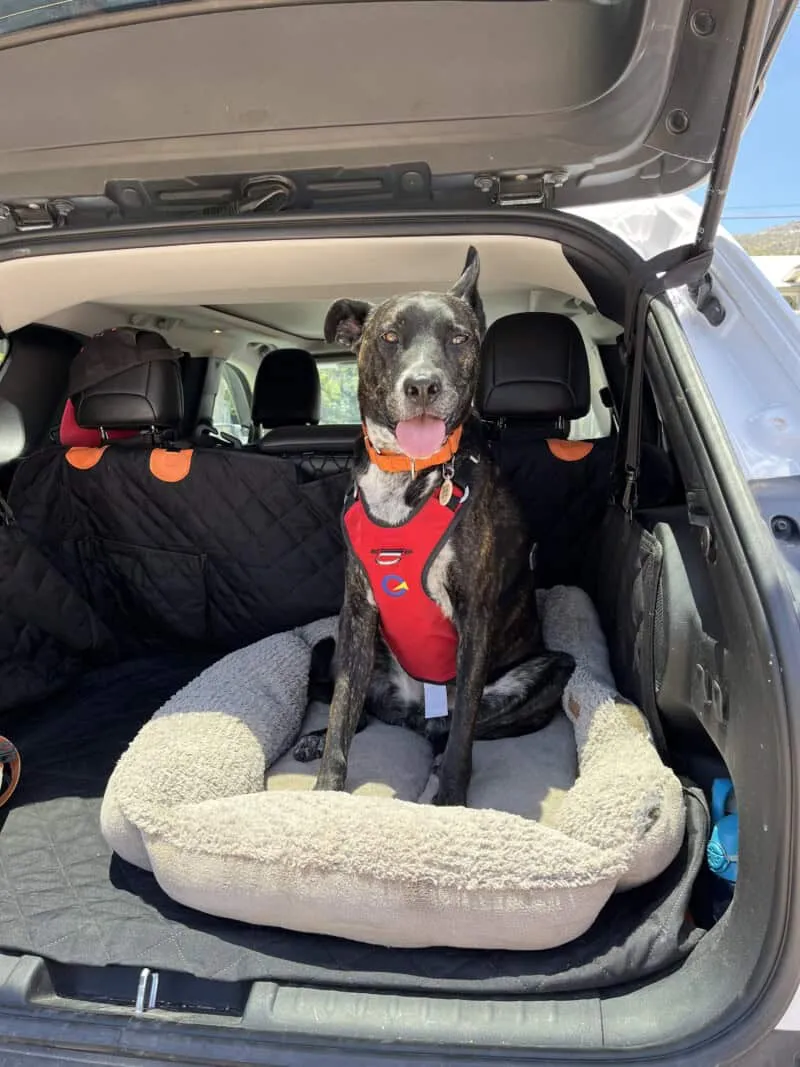 Side view of a large dog wearing the OptimusGear Defender, showcasing the fit of this best car seat belt for large dogs.
Side view of a large dog wearing the OptimusGear Defender, showcasing the fit of this best car seat belt for large dogs.
RUNNER UP: SleepyPod Clickit Sport Harness
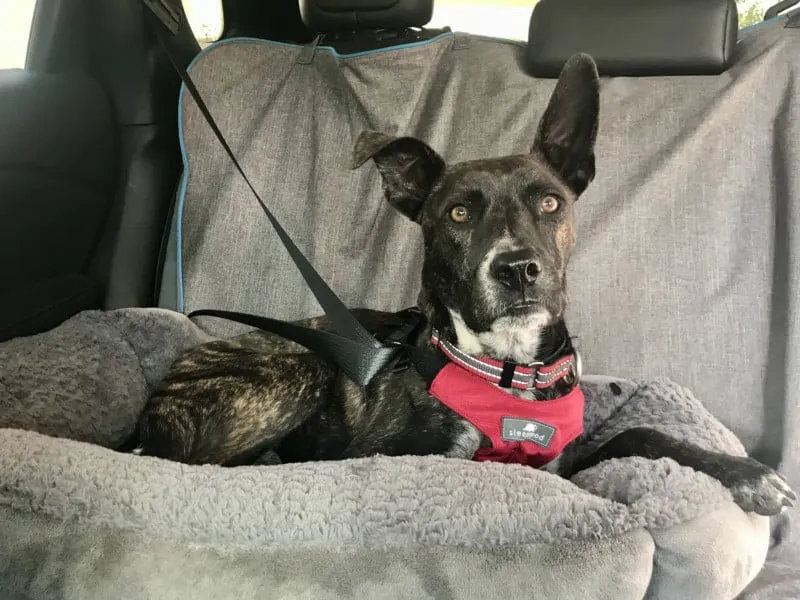 Large brindle dog comfortably secured in the car with a red Sleepypod Clickit Sport car seat belt harness.
Large brindle dog comfortably secured in the car with a red Sleepypod Clickit Sport car seat belt harness.
The SleepyPod Clickit Sport Harness is a testament to thoughtful design and superior materials, earning its spot as a top contender for the best car seat belt for large dogs. It’s a prime example of a product that prioritizes safety without compromising comfort.
Highlights:
- Crash-Tested and Certified: Verified by the Center for Pet Safety (CPS), a gold standard for pet safety products.
- Sizes Available: S to XL, suitable for a wide range of large breeds.
- Weight Capacity: Accommodates dogs from 18 to 90 pounds.
- Installation: Designed for the vehicle’s seat belt to pass through two loops on the back of the harness, creating a secure restraint.
True to SleepyPod’s reputation, the Clickit Sport Harness is meticulously designed and constructed from the highest quality materials. Its innovative Infinity Loop design integrates a padded vest, seat belt-grade straps, and stress-tested buckles to effectively absorb impact forces during a collision, minimizing potential injury. The three seat belt contact points offer exceptional security, keeping your large dog firmly in place.
What We Like:
- Simple, streamlined design that avoids bulkiness, ensuring comfort.
- Step-in style makes it incredibly easy to put on and take off.
- Double D-rings on the back provide convenient attachment points for a leash, perfect for quick breaks.
- Available in a variety of colors to choose from.
- Constructed from durable ballistic nylon with a neoprene padded vest, making it easy to clean.
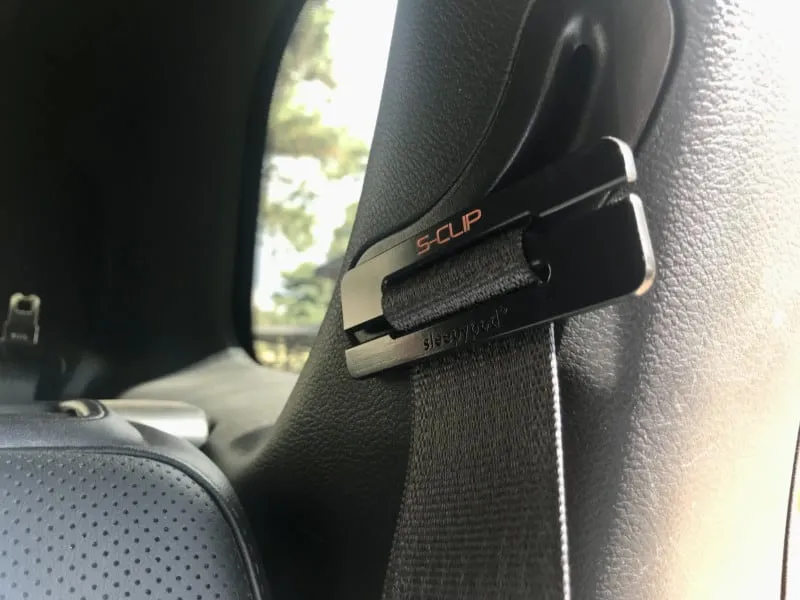 Close-up of the Sleepypod S-Clip accessory, designed to secure dog car seat belts for large breeds.
Close-up of the Sleepypod S-Clip accessory, designed to secure dog car seat belts for large breeds.
What We’d Change:
- The straps can be somewhat difficult to adjust initially.
- May not be the ideal fit for deep-chested breeds such as Greyhounds, Whippets, Salukis, Afghan Hounds, and Borzoi.
BEST FOR ESCAPE ARTISTS: Ruffwear Load Up Harness
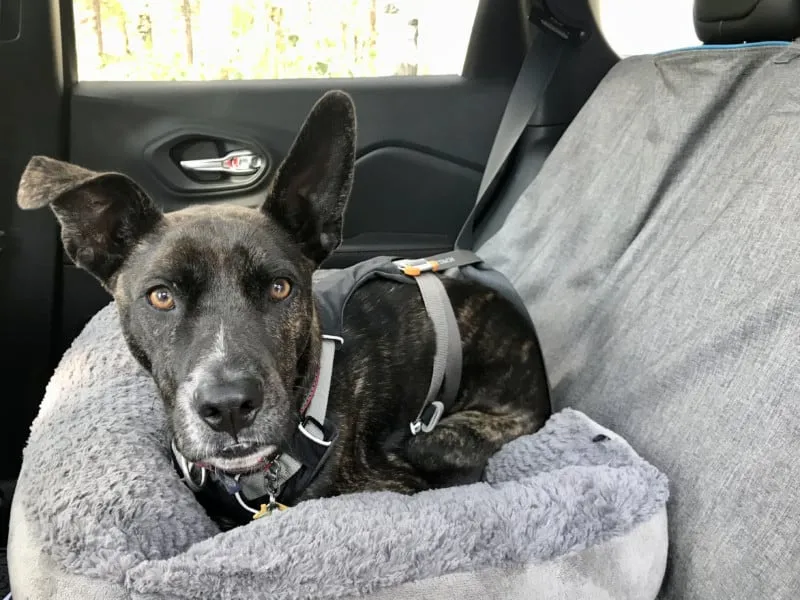 Large brindle dog safely buckled into a car with the robust Ruffwear Load Up car seat belt harness.
Large brindle dog safely buckled into a car with the robust Ruffwear Load Up car seat belt harness.
For adventurous large dogs, especially those with a knack for wriggling out of restraints, the Ruffwear Load Up Harness offers unparalleled security. It’s engineered to keep even the cleverest escape artists safely buckled, making it an excellent choice for a robust [dog leash car seat belt](https://dogcarestory.com/dog-leash-car-seat-belt/) setup.
Highlights:
- Crash Tested: Dynamically crash-tested at a National Highway Traffic Safety Administration contracted test facility for dogs up to 75 pounds.
- Sizes Available: XXS to L/XL, offering a broad range for various large dog girths.
- Girth Capacity: Accommodates dogs with girths from 13 to 42 inches.
- Installation: Designed to have the vehicle’s seat belt pass through a single loop at the back of the harness.
Like all Ruffwear gear, the Load Up harness is built for serious adventure and maximum durability. It has undergone rigorous dynamic crash testing and static tensile testing on all critical components, proving its strength. Featuring all-metal hardware, a tough polyester shell, and a polyester lining, this harness is both incredibly strong and long-lasting. Its generously sized belly panel provides ample coverage, effectively thwarting most attempts by escape-prone dogs to slip out.
What We Like:
- Extremely durable construction, built to withstand tough conditions.
- Hand washable for easy cleaning after muddy adventures.
- Four points of adjustment ensure a customizable and secure fit.
- Velcro tabs help manage excess straps, keeping the harness neat and tidy.
- Comfortable for extended wear, suitable for long road trips.
What We’d Change:
- The large belly panel, while effective for security, can make the harness feel hot for dogs in warmer climates or during summer.
- Lacks rings for attaching a leash, meaning it’s primarily designed for car use and requires a separate harness or collar for walks.
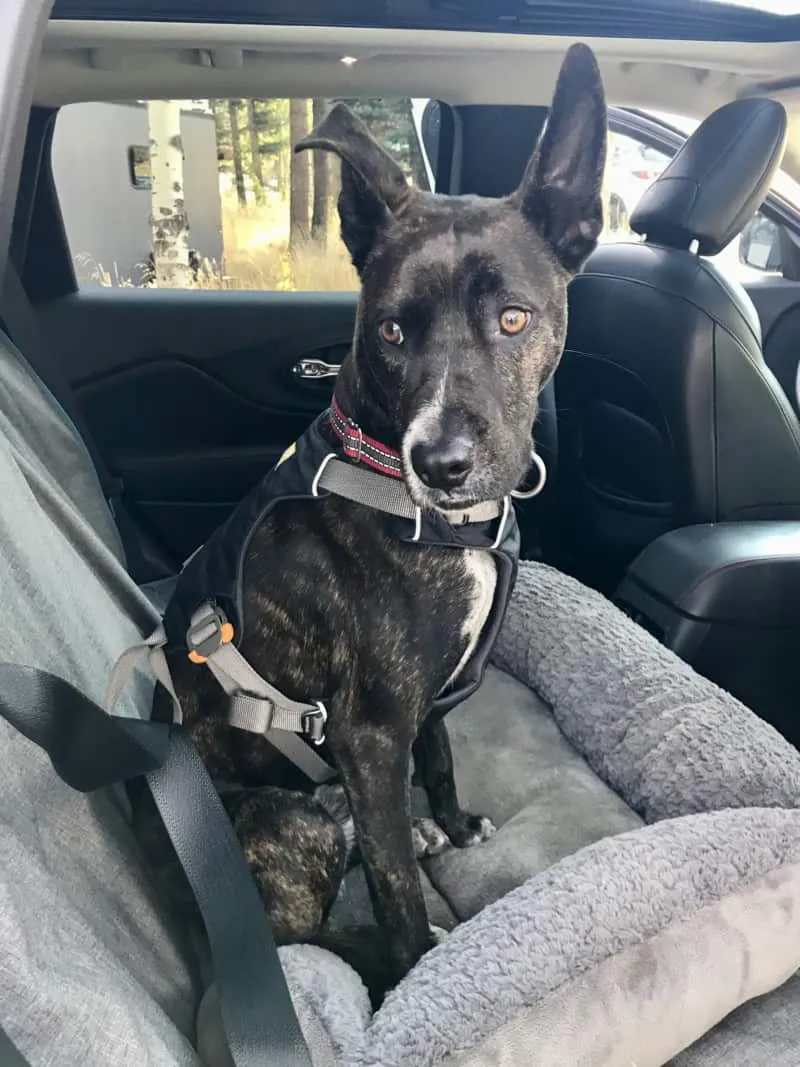 Rear view of a large dog wearing the Ruffwear Load Up, showcasing the full coverage of this car safety harness.
Rear view of a large dog wearing the Ruffwear Load Up, showcasing the full coverage of this car safety harness.
MOST CONVENIENT: Kurgo Enhanced Strength Tru-Fit Harness
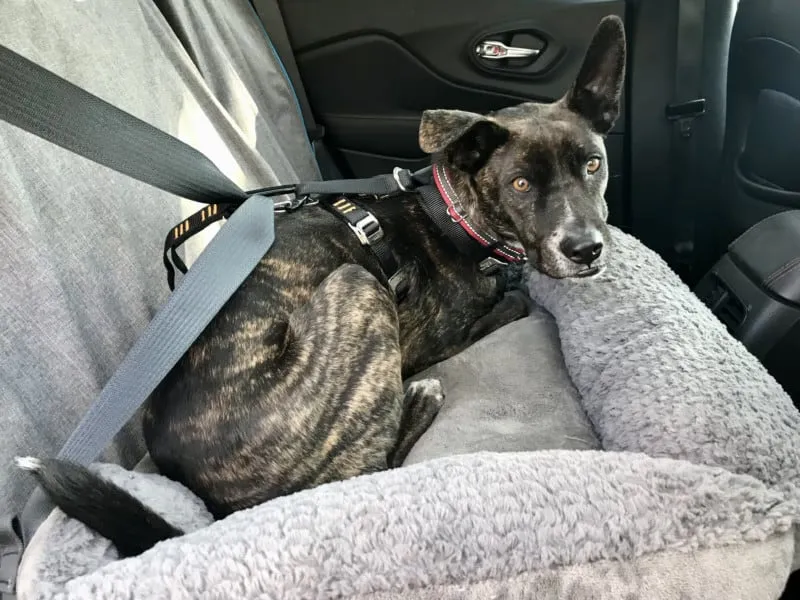 Large brindle dog secured in the car with the convenient Kurgo Enhanced Strength Tru-Fit car seat belt harness.
Large brindle dog secured in the car with the convenient Kurgo Enhanced Strength Tru-Fit car seat belt harness.
For dog owners seeking ease of use without compromising safety, the Kurgo Enhanced Strength Tru-Fit Harness stands out as the most convenient option for a best car seat belt for large dogs. It blends robust safety features with an incredibly straightforward installation process.
Highlights:
- Crash Tested: Tested at a university facility maintaining Federal Motor Vehicle Safety Standard No. 213 for Child Restraint Systems for dogs up to 75 pounds at 30 miles per hour.
- Sizes Available: XS to XL, accommodating a broad range of large dog weights.
- Weight Capacity: Designed for dogs weighing 5 to 105 pounds.
- Installation: Uses an included carabiner to easily attach the harness straps to your vehicle’s seat belt.
Kurgo’s Enhanced Strength Tru-Fit harness utilizes all-steel hardware, providing exceptional strength and durability for its core function as a car safety restraint. It features both front and back D-ring leash attachments, making it versatile for both car travel and quick walks. What truly sets this harness apart is its unmatched convenience in installation. You can leave the vehicle’s seat belt buckled with the carabiner attached, then simply release the harness straps when it’s time to let your dog out of the car. This seamless process makes it a favorite for daily commutes.
What We Like:
- Simple, non-bulky design for comfortable wear.
- Over-the-head style familiar to most dog owners.
- D-rings on both front and back make it excellent for everyday walks.
- Five adjustment points ensure a precise and secure fit for large breeds.
- Machine washable for effortless cleaning.
- Comes with an all-steel carabiner, simplifying the buckling process.
What We’d Change:
- The nesting buckles can be challenging for some individuals to operate.
- On deep-chested dogs, the straps might cause chafing behind the front legs.
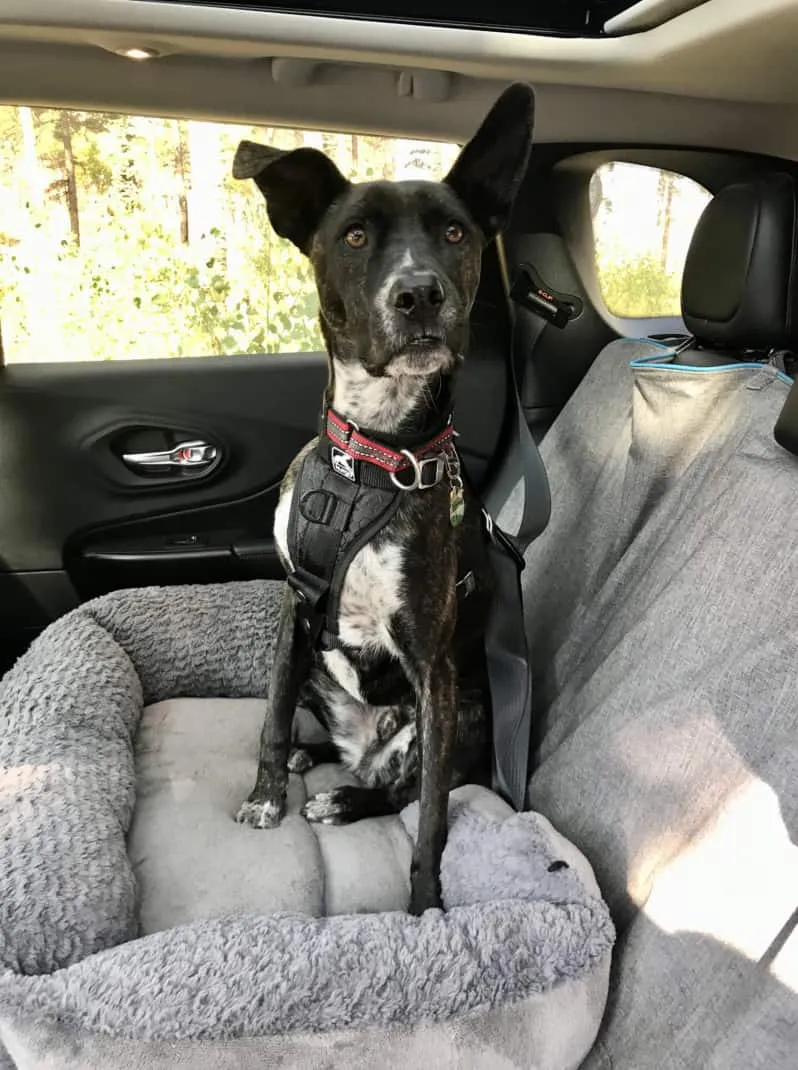 Side view of a large dog wearing the Kurgo Tru-Fit, highlighting its simple design as a reliable car seat belt.
Side view of a large dog wearing the Kurgo Tru-Fit, highlighting its simple design as a reliable car seat belt.
MOST VERSATILE: Sleepypod Clickit Terrain Harness
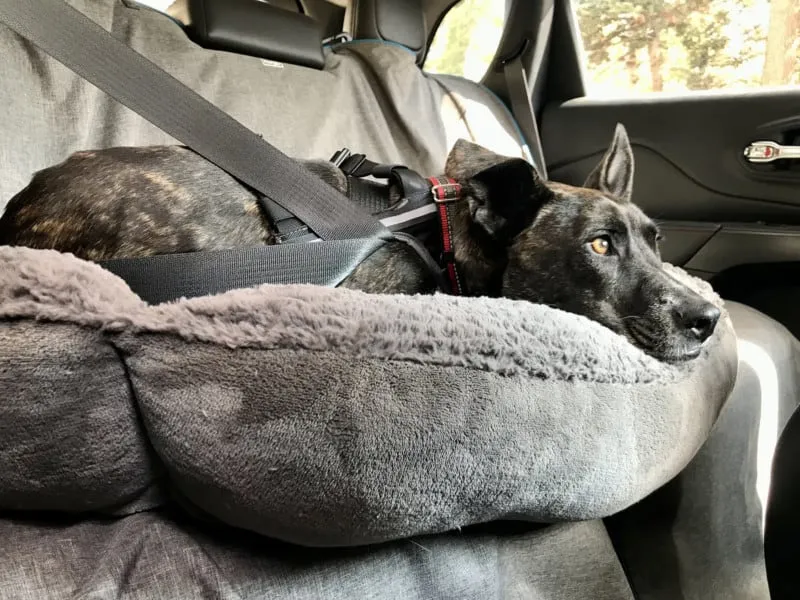 Large brindle dog buckled safely in a car with the versatile Sleepypod Clickit Terrain car seat belt harness.
Large brindle dog buckled safely in a car with the versatile Sleepypod Clickit Terrain car seat belt harness.
When it comes to versatility combined with top-tier safety, the Sleepypod Clickit Terrain Harness excels, making it an outstanding contender for the best car seat belt for large dogs. Sleepypod consistently leads the industry in quality, safety, and ingenuity.
Highlights:
- Crash-Tested and Certified: Independently verified by the Center for Pet Safety (CPS).
- Sizes Available: S to XL, accommodating a broad spectrum of large dog weights.
- Weight Capacity: Suitable for dogs weighing 18 to 110 pounds.
- Installation: Designed for the vehicle’s seat belt to pass through both sides of the harness, ensuring robust security.
The Clickit Terrain harness incorporates Sleepypod’s signature Infinity Loop design, a padded vest, seat belt-grade straps, and stress-tested buckles, all working in concert to protect your large dog in a car accident. What truly sets this model apart is its exceptional versatility: it seamlessly transforms into a backpack with the optional Terrain Pack, making it ideal for active dogs and owners. This dual functionality offers great value, allowing the harness to serve multiple purposes from car safety to outdoor adventures. You can even consider [Mercedes-Benz dog seat covers](https://dogcarestory.com/mercedes-benz-dog-seat-covers/) to complement the premium feel and protect your car’s interior during these versatile adventures.
What We Like:
- Step-in design for easy and quick on/off.
- Double D-rings on the back provide convenient leash attachment points.
- Available in a wide variety of colors.
- Constructed from durable ballistic nylon with a neoprene padded vest, making it easy to clean.
- Can be enhanced with the S-Clip and Buckle Shield, which locks the seat belt strap in place and covers the seat belt release button for added security.
What We’d Change:
- The straps can be somewhat challenging to adjust.
- Similar to the Clickit Sport, it might not fit deep-chested breeds like Greyhounds, Whippets, Salukis, Afghan Hounds, and Borzoi as comfortably.
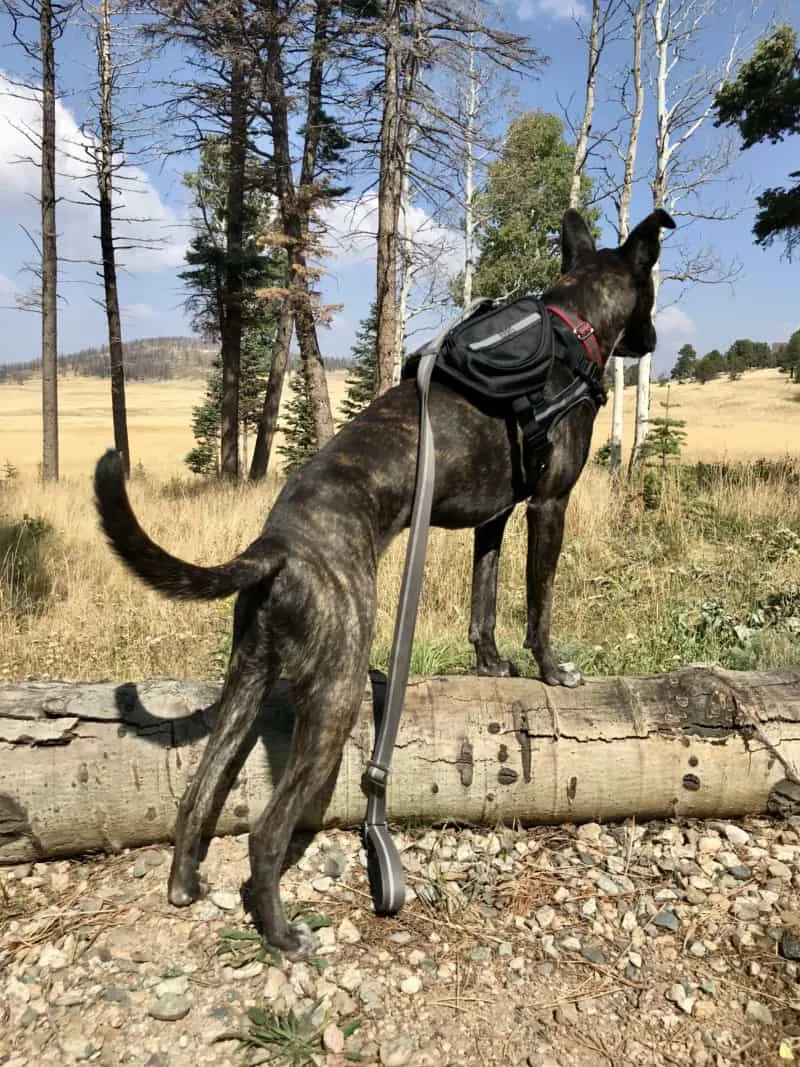 Large dog in a Sleepypod Clickit Terrain harness with the optional Terrain Pack, demonstrating its multi-purpose use.
Large dog in a Sleepypod Clickit Terrain harness with the optional Terrain Pack, demonstrating its multi-purpose use.
Other Highly-Rated Car Seat Belts for Large Dogs
Beyond our top recommendations, several other crash-tested harnesses offer excellent safety and design features for large dogs.
AllSafe Comfort Harness
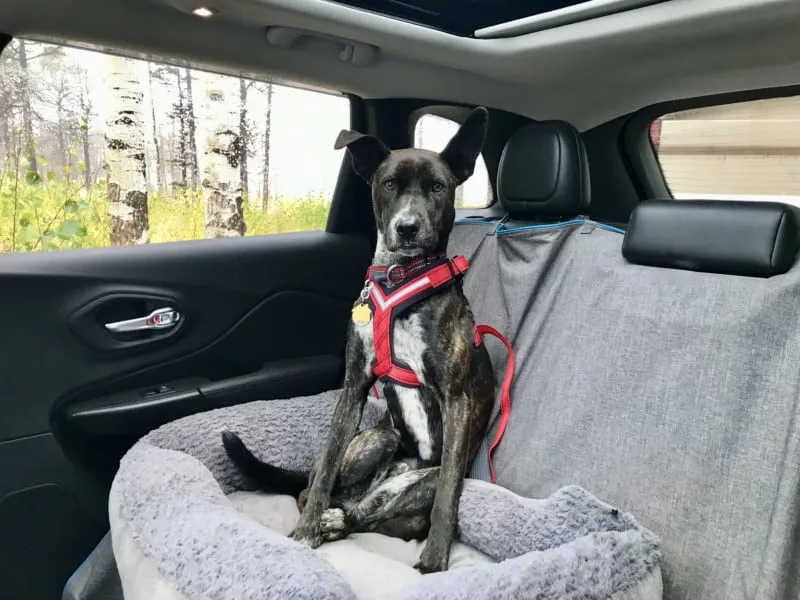 Large brindle dog safely buckled up in the car with the AllSafe Comfort car seat belt harness, developed in Germany.
Large brindle dog safely buckled up in the car with the AllSafe Comfort car seat belt harness, developed in Germany.
Developed in Germany by a company with 18 years of experience in pet safety, the AllSafe Comfort harness is engineered with European safety standards in mind, making it a reliable best car seat belt for large dogs.
Highlights:
- Crash Tested: Certified in Germany according to ECE R-17 and ISO27955 safety standards.
- Sizes Available: S to XL.
- Girth Capacity: Designed for girths from 6.4 to 12 inches (Note: this seems to be a typo in the original source, likely meant much larger for L/XL).
- Installation: Involves attaching screw locks and two clasps to the seat belt, then using a swivel snap to connect a tether to the harness.
The AllSafe Comfort harness has been stress-tested to withstand a minimum of 4,410 pounds of force for sizes M, L, XL (Size S tested to 2,205 lbs), showcasing its impressive strength. It features padded chest and back plates that mold to your dog’s body for enhanced comfort during travel.
What We Like:
- Simple, non-bulky harness design.
- D-rings on the back provide convenient leash attachment.
- Constructed from high-strength polyester fabric for superior durability.
- Can be spot cleaned or washed by hand.
- Includes a seat belt tether with a swivel snap, simplifying the connection between the harness and the seat belt.
What We’d Change:
- Installing the tether can be more complicated than other harnesses, requiring specific threading of the seat belt through screw locks and two clips.
- The over-the-head design with a single side release buckle requires feeding one of the dog’s front paws through the harness, which can make it a little harder to put on and take off.
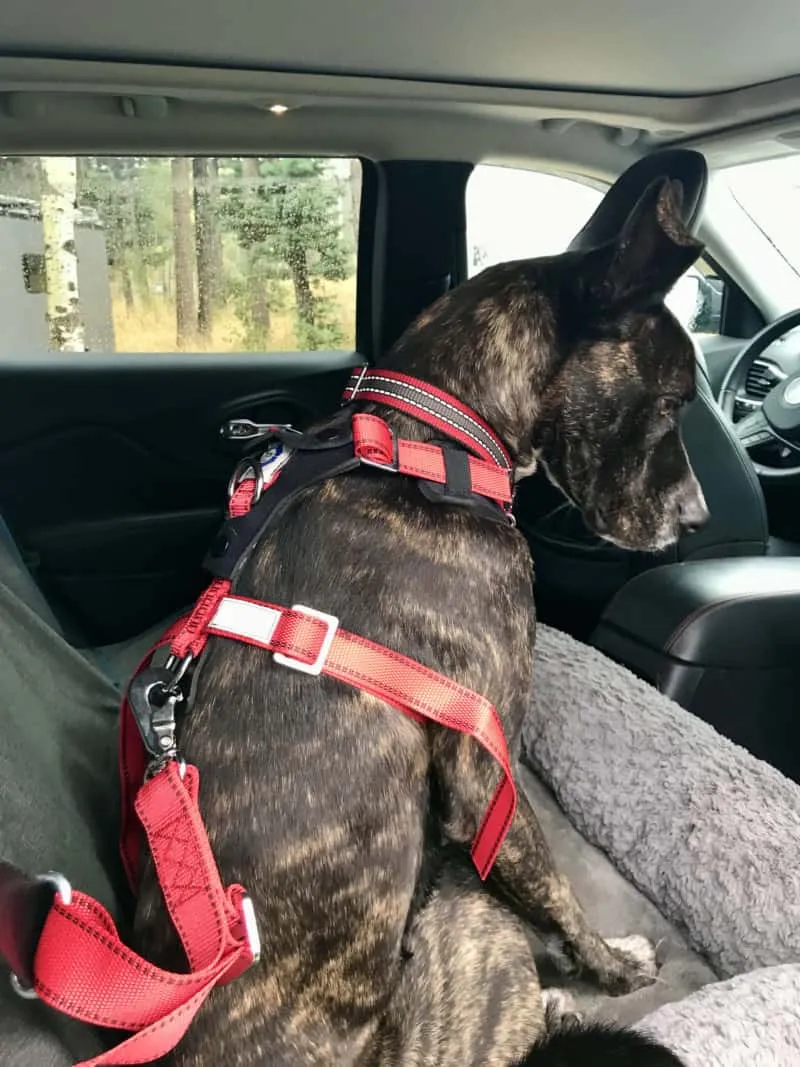 Side view of a large dog wearing the AllSafe Comfort harness, showcasing its padded chest and back plates.
Side view of a large dog wearing the AllSafe Comfort harness, showcasing its padded chest and back plates.
EzyDog Drive Harness
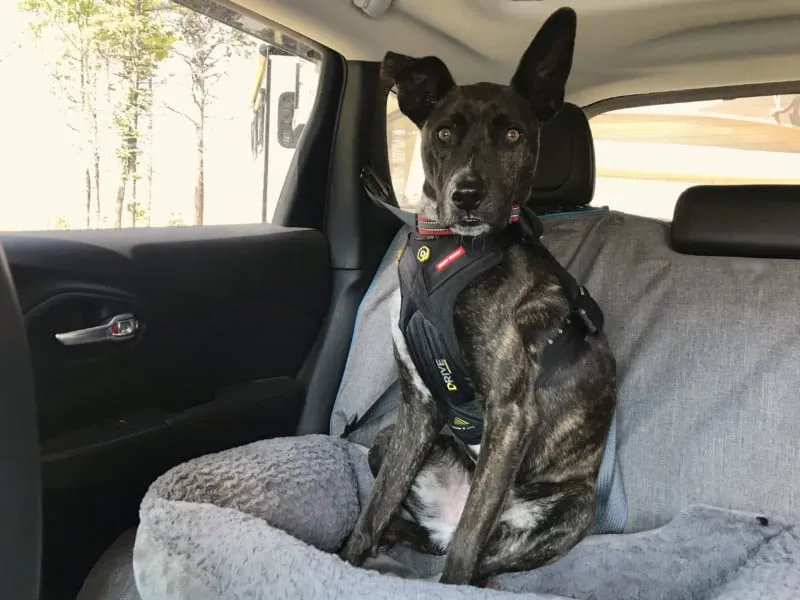 Large brindle dog in the EzyDog Drive crash-tested car seat belt, known for its structured and substantial design.
Large brindle dog in the EzyDog Drive crash-tested car seat belt, known for its structured and substantial design.
The EzyDog Drive Harness is one of the most structured and substantial options available, making it a formidable contender for the best car seat belt for large dogs.
Highlights:
- Crash Tested: Tested at Automotive Safety Engineering in Australia, a facility recognized by American, European, and Australian regulatory agencies for child-restraint standards.
- Sizes Available: S to L.
- Weight Capacity: Designed for dogs weighing 15 to 75 pounds.
- Installation: Requires the vehicle’s seat belt to pass through two loops on the back of the harness.
The Drive harness from EzyDog is often described as the “beast” of crash-tested dog harnesses due to its robust build. It features an ergonomic molded chest plate that conforms to your dog’s shape, straps made from vehicle-tested seat belt webbing, and aluminum alloy glides. These components combine to create an incredibly secure and durable restraint system.
What We Like:
- Step-in design for easy on and off.
- Double D-rings on the back for convenient leash attachment.
- Durable construction and hand washable for easy cleaning.
- Webbing is marked for balanced measurements, ensuring symmetrical adjustment.
- Hook-and-loop tabs effectively hold excess straps in place.
What We’d Change:
- The sturdy chest plate, while protective, might be less comfortable for very long rides.
- Its bulky nature can be less ideal for smaller dogs within the “large” category.
- The wide chest plate might not fit narrow-chested breeds perfectly.
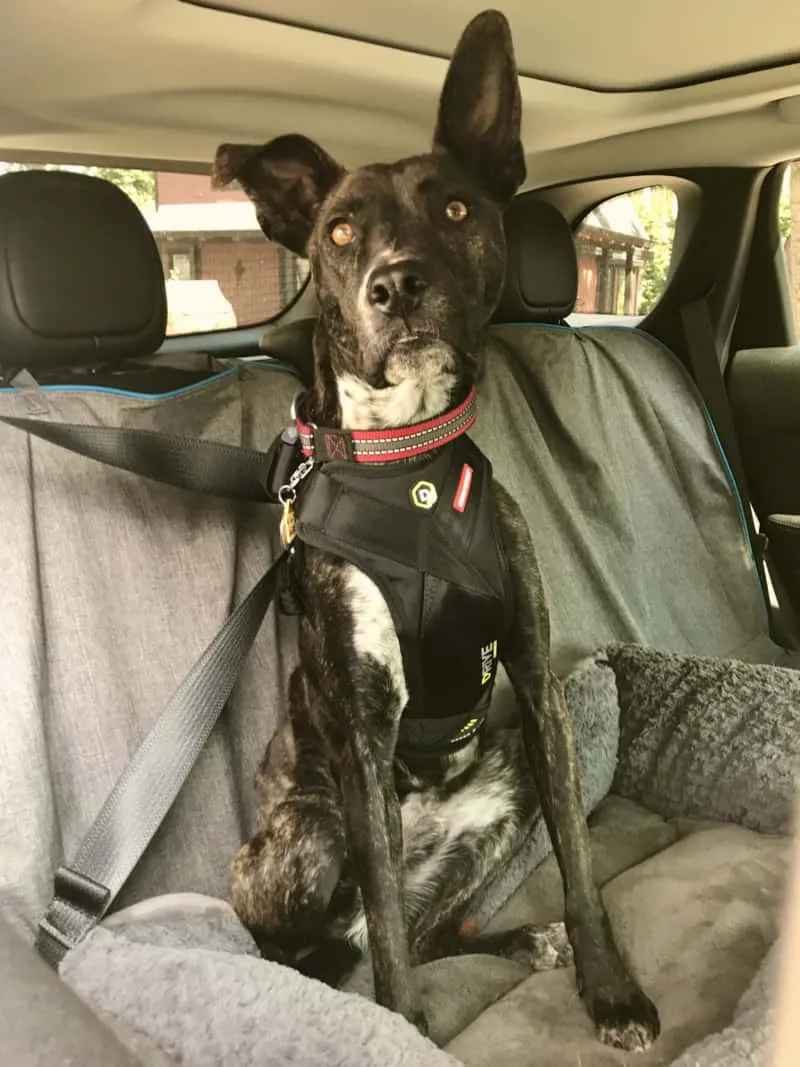 Side profile of a large dog wearing the EzyDog Drive harness, featuring its ergonomic molded chest plate.
Side profile of a large dog wearing the EzyDog Drive harness, featuring its ergonomic molded chest plate.
Kurgo Impact Harness
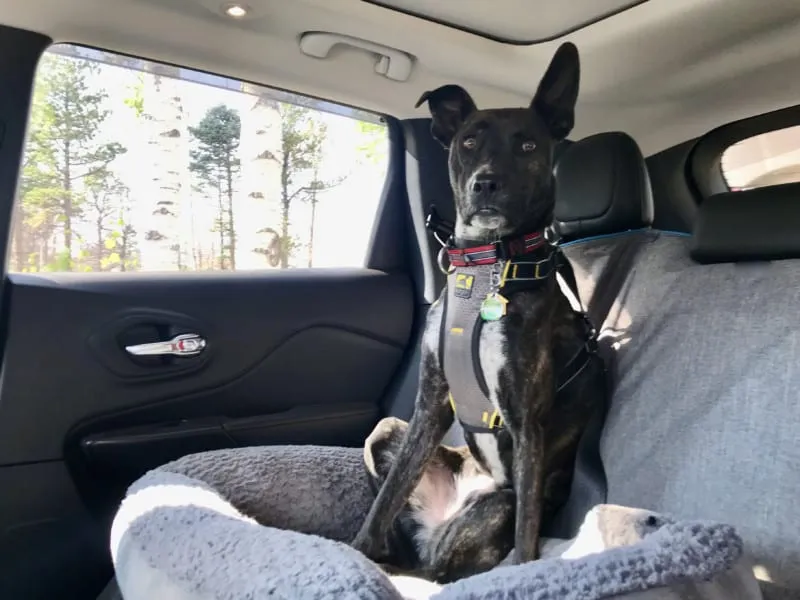 Large brindle dog secured in the car with the robust Kurgo Impact car seat belt harness, tested for safety.
Large brindle dog secured in the car with the robust Kurgo Impact car seat belt harness, tested for safety.
The Kurgo Impact Harness lives up to its name, designed with significant impact protection in mind. It’s a strong contender for the best car seat belt for large dogs seeking maximum security.
Highlights:
- Crash Tested: Tested up to 108 pounds at Calspan, an independent engineering and test services company, in 2020, using current PPSC testing guidelines and Federal Motor Vehicle Safety Standard for child restraint systems.
- Sizes Available: S to XL.
- Weight Capacity: Designed for dogs weighing 10 to 108 pounds.
- Installation: Requires the vehicle’s seat belt to pass through both restraint straps on the back of the harness.
Constructed from 4,000-pound tubular webbing and all-steel buckles and hardware, Kurgo’s Impact harness is built for extreme strength and durability. It has been extensively crash-tested, with video evidence often provided by the manufacturer, reinforcing its commitment to safety for large breeds.
What We Like:
- D-ring for convenient leash attachment on the back.
- Can be spot cleaned or hand washed for maintenance.
What We’d Change:
- The harness goes on over the head, and both of the dog’s front legs must be fed through the restraint loops, making it less easy to put on and take off.
- Nesting buckles can be difficult for some people to operate efficiently.
- The webbing sometimes slides through the buckles, requiring frequent readjustment to maintain a snug fit.
- The restraint loops can interfere with movement when used as a walking harness, making it less versatile for dual purpose.
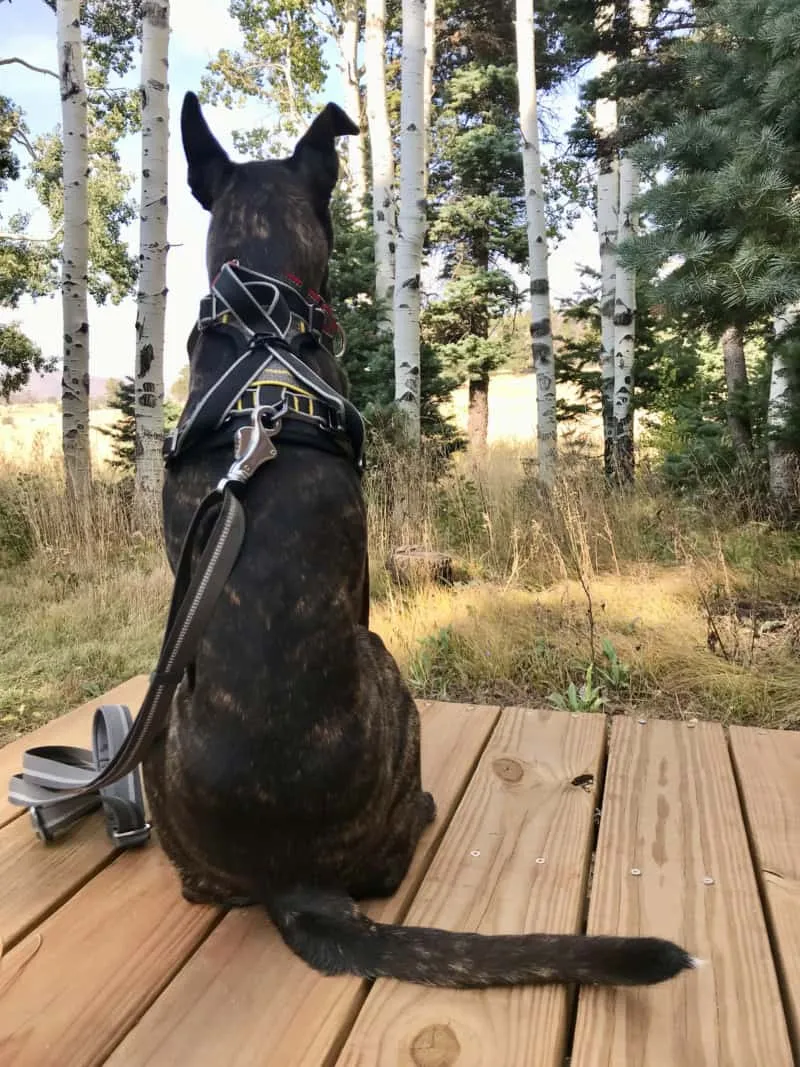 Large dog sitting outdoors in the Kurgo Impact car seat belt harness, designed for strength and durability.
Large dog sitting outdoors in the Kurgo Impact car seat belt harness, designed for strength and durability.
Ensuring the Perfect Fit and Acclimation for Your Large Dog
Choosing the best car seat belt for large dogs is only half the battle; ensuring it fits perfectly and your dog is comfortable wearing it are equally critical steps for safety and successful car travel.
Sizing and Adjustment Tips
A crash-tested dog harness is only effective if it fits correctly. If your dog can wriggle out while you’re driving, its purpose is defeated. Always carefully review the manufacturer’s sizing chart and fitting recommendations. These charts typically base sizes on your dog’s chest girth and weight. If your large dog falls between sizes, it’s generally best to opt for the larger size, as this allows you to tighten the straps for a snug, secure fit without restricting movement. Remember, the goal is a secure fit that prevents escape but doesn’t pinch or chafe.
Making Car Travel a Positive Experience
We understand that some dogs, especially those unaccustomed to restraints, may initially dislike the confinement of a [dog car seat belt](https://dogcarestory.com/dog-leash-car-seat-belt/). However, this is about their safety and yours. It’s worth the effort to help your dog acclimate to the harness and associate car travel with positive experiences.
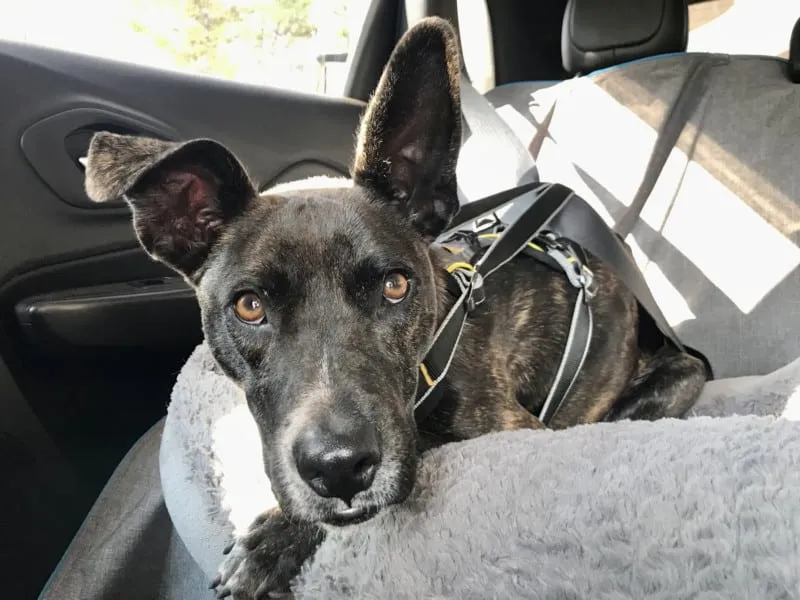 Large brindle dog buckled safely in the car with the Kurgo Impact car seat belt, emphasizing a secure fit.
Large brindle dog buckled safely in the car with the Kurgo Impact car seat belt, emphasizing a secure fit.
We recommend starting the acclimation process at home. Allow your dog to wear the new crash-tested dog harness for short periods, praising them and offering tasty treats. Once they’re comfortable wearing it, practice buckling them into the car seat belt, waiting a minute or two, and then releasing them, always accompanied by positive reinforcement.
Gradually increase the time your pet spends buckled in. When they seem comfortable with stationary buckling, try a short drive around the block. Crucially, ensure these initial drives end in “happy places”—like the dog park, a favorite walking trail, or a playdate with a furry friend. This positive association will help your large dog view their car seat belt and car rides as rewarding experiences, making future travels much smoother and safer.
Conclusion
Choosing the best car seat belt for large dogs is a crucial decision for any responsible pet owner who travels with their canine companion. While comfort and convenience are important, safety—backed by independent crash-testing and certifications—must be the ultimate priority. The harnesses reviewed, from the supremely durable OptimusGear Defender to the versatile Sleepypod Clickit Terrain, represent the top crash-tested options available, each offering unique features to suit different needs and preferences.
Remember, a proper fit and a positive acclimation process are just as vital as the quality of the harness itself. By investing in a high-quality, crash-tested large dog seat belt and taking the time to train your dog, you are ensuring their safety, preventing driver distractions, and protecting everyone in your vehicle. Make every journey a safe and enjoyable one for your beloved large dog.
References
- Center for Pet Safety (CPS): Independent non-profit research and advocacy organization dedicated to companion animal safety.
- Federal Motor Vehicle Safety Standard (FMVSS 213): Standard for child restraint systems, often referenced by pet product manufacturers for crash testing.
- Automotive Safety Engineering (Australia): Recognized testing facility for child-restraint standards, used by brands like EzyDog.
- Calspan: Independent engineering and test services company, used by brands like Kurgo for crash testing.
- ECE R-17 and ISO27955: European safety standards for vehicle occupant protection and securing loads, referenced by brands like AllSafe.
